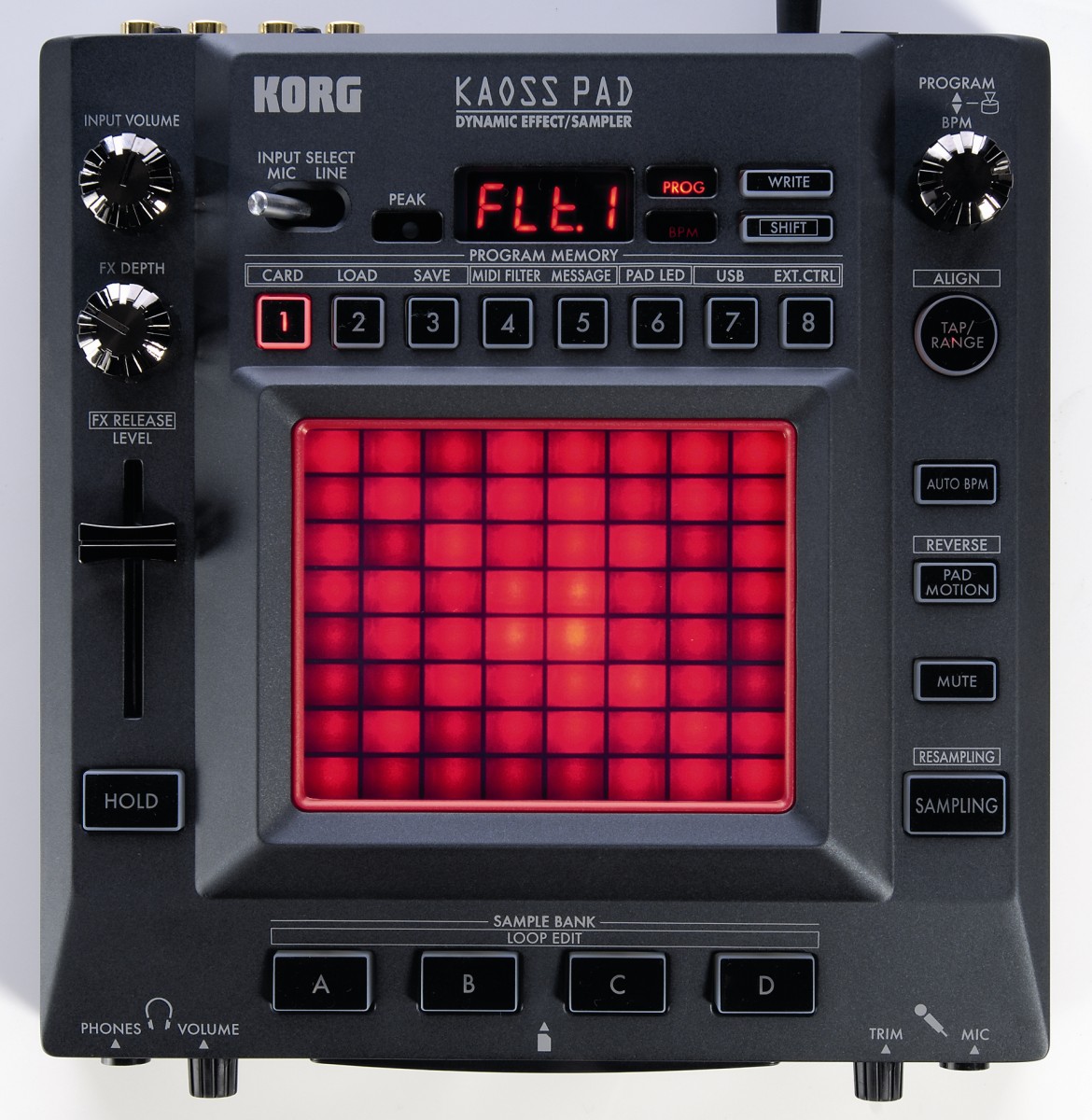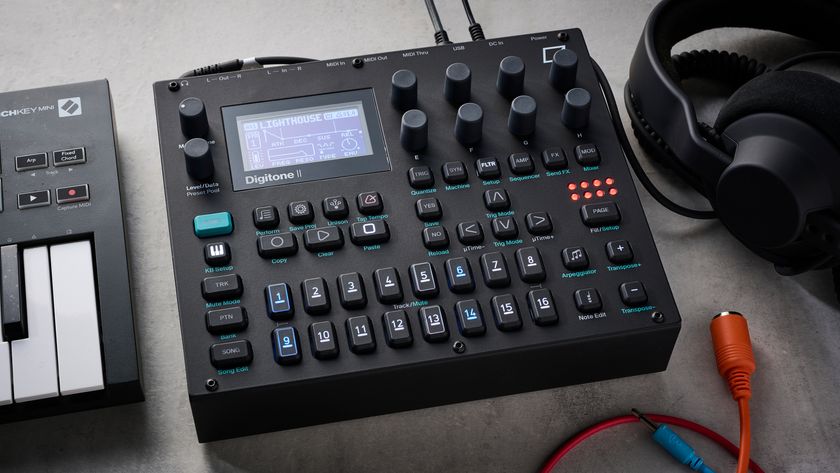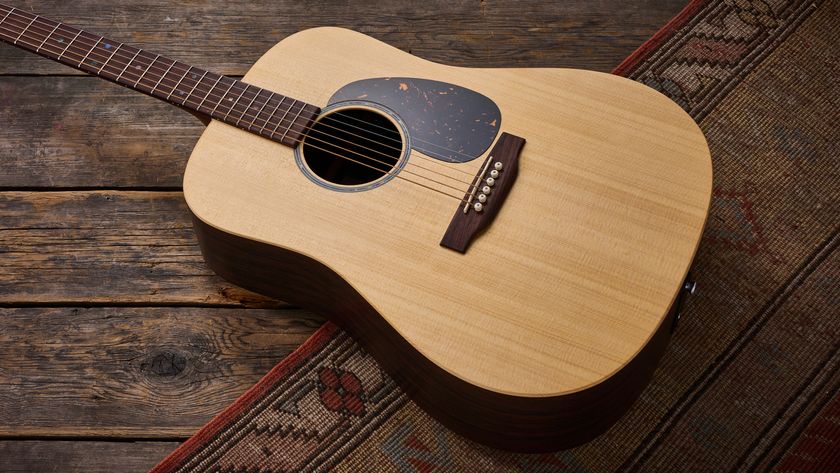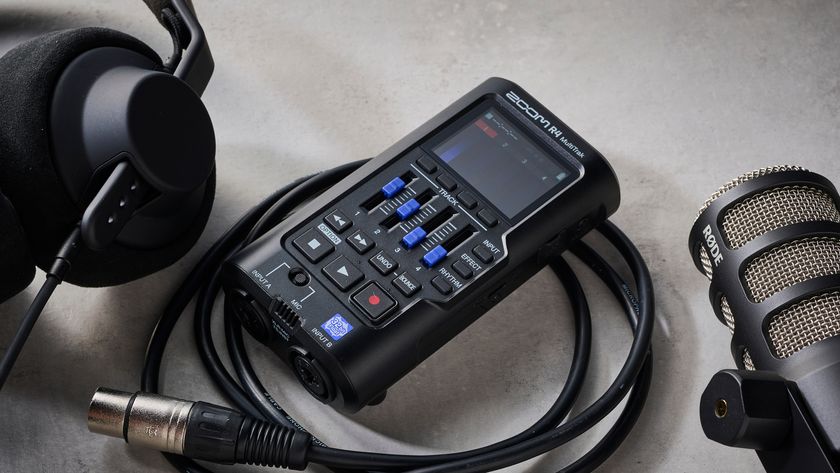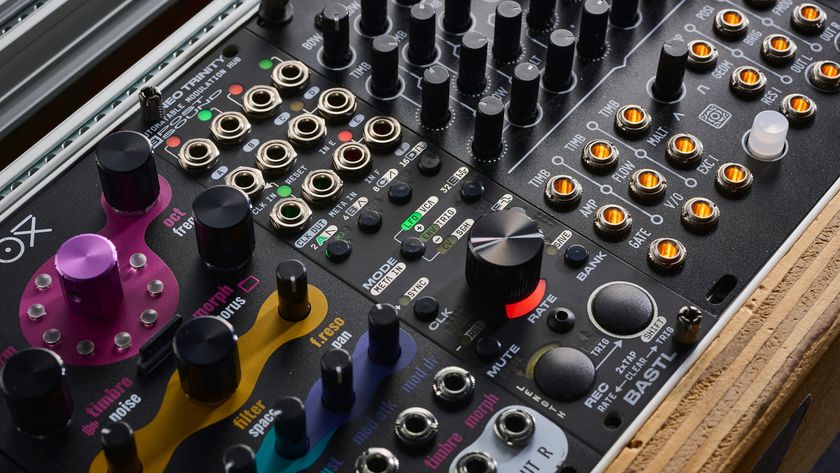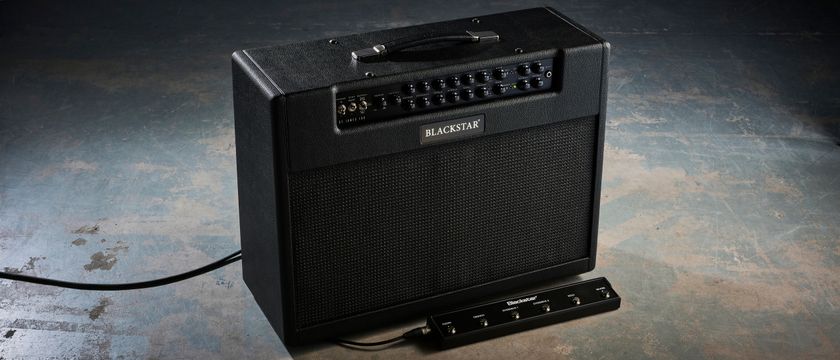MusicRadar Verdict
The KP3 is great fun, delivers great results and is really easy to use. Can´t say fairer than that.
Pros
- +
Excellent screen and control surface. Cool new programs. Great performance features.
Cons
- -
We'd like more sample time. And more sample triggers.
MusicRadar's got your back



First released in 1999, the Kaoss Pad is (first and foremost) a signal effects processor with a large, 'playable' surface. This means that parameters from a particular effects program can be mapped onto a large X-Y control surface and an incoming signal can then be manipulated by changes you draw on the screen itself.
A second pad arrived in 2002, prompted by requests from Kaoss users who demanded onboard sample triggers, extended effects algorithms and an improved control surface. These features were duly implemented, along with DJ tools like BPM detection and a dedicated mic input.
Additional features
So, what's new in KP3? Firstly, the screen has, once again, been modified. Gone is KP2's grey and blue approach, which subtly shifted hue as you applied finger pressure.
In its place comes a screen divided into red LED blocks that light up as they follow your movements around the screen. It's all much clearer and even more intuitive than before, which (for a product famed for its immediacy) is quite a coup.
Indeed, so proud is Korg of the KP3's screen that each time you load a new effects program its name scrolls across the screen in giant letters. And in case you're still not impressed, a minute or so of inactivity will trigger a series of dancing screensavers to rival the Blackpool Illuminations.
Take our word for it: the surface is truly brilliant.
The next key update is in the number of effects programs offered by KP3. The 100 programs in KP2 always seemed a little ungenerous so we're delighted to report that KP3 swells this number to 128.
Kaoss Pad's great forte has traditionally been tempo-based effects, whereby modulating delays clocked to the tempo of your input signal spin off into weird and wonderful places. There are still plenty of programs that subscribe to this philosophy, but they've been joined by many others that take a different tack.
The decimator is effectively a bit-crusher, which grabs your audio by the scruff of the neck and then beats it into lo-fi submission.
The filter has also been expanded to offer up to 72dB of cut-off, which is pretty extreme to say the least. Combine this with some of the Kaoss' resonance and you're in filter heaven.
EQ effects are also brought more to the fore in KP3, with EQ parameters sprinkled liberally around the control pad. It's astonishing how quickly you get used to how the effects parameters are spread around the pad, and therefore how quickly you can learn to play and control them.
Performance tools
It's not just the number of effects types that have been overhauled - some great new performance features lie in wait, too.
For starters, KP3 has an FX release level control, which appears as a long-throw fader to the left of the main screen. This enables you to set a fade-out time for any effects with a release time, such as delays and reverbs.
Other enhanced performance controls include the revamped Pad Motion control. Introduced on KP2, this function enabled you to flick a switch and draw some motion data on the screen. This would then loop once the switch was un-flicked, enabling you to busy yourself with other functions.
KP3 enhances this by putting the effect under a pad button, which is easier to operate.
Pad Motion data can also be reversed, so you can build-up some quite complex motion loops with the minimum of fuss. The enhanced surface really comes into its own here, as the Pad Motion is actually displayed by the running lights on the screen.
KP3 has also grown a brand-new knob on the front panel - FX Depth. This is like a dry-wet setting, enabling you to immediately blend the balance between the processed and unprocessed signal.
Whilst the rear-mounted toggle switch for selecting whether you want to run the Kaoss Pad as a direct source or mix send processor remains, this is still a great addition, and it quickly becomes a new performance tool in its own right.
Sample capacity
The Kaoss Pad's affinity with tempo-related matters has always been strong. The tap-tempo control introduced with KP2 remains, but the sampling department of KP3 also now benefits from a stricter sense of time.
Sampling is now of a 16-bit/48kHz standard and four pads below the screen enable you to trigger up to four of these at once.
Direct record mode can be selected for each pad, so it's easy to keep track of where your recordings are held. However, the clever part is that new recordings can be made in terms of beats rather than time. Before a recording is made you can select the tempo of the incoming signal and then capture up to 16 beats of audio at that tempo.
This auto-record function means it's as easy as pie to grab tempo-relevant audio files. Again, this is great for DJs and performers alike.
It's also possible to chop your brand-new audio file into slices and map these to the eight program buttons at the top of the unit, so that new loops can be created from triggering the slices in an unusual order. Resampling is possible too - your loops can be re-recorded directly by the unit through its own FX.
A new onboard SD card slot mounted at the front of the unit means that samples and data can now be easily stored or backed up. There's scope for Korg to go further in future updates, with even more sample time and a larger number of sample triggers on our wish list.
Another step forward
With the release of KP2, Korg listened carefully to the wishes and needs of its user base, and we can only praise them for the continuation of this process. The result is a tool that within a minute of startup provides intuitive control over a great range of effects programs.
Try KP3. Don't arrange anything for the subsequent three hours though. You'll be late.
MusicRadar is the number 1 website for music makers of all kinds, be they guitarists, drummers, keyboard players, djs or producers...
GEAR: We help musicians find the best gear with top-ranking gear round-ups and high- quality, authoritative reviews by a wide team of highly experienced experts.
TIPS: We also provide tuition, from bite-sized tips to advanced work-outs and guidance from recognised musicians and stars.
STARS: We talk to musicians and stars about their creative processes, and the nuts and bolts of their gear and technique. We give fans an insight into the actual craft of music making that no other music website can.
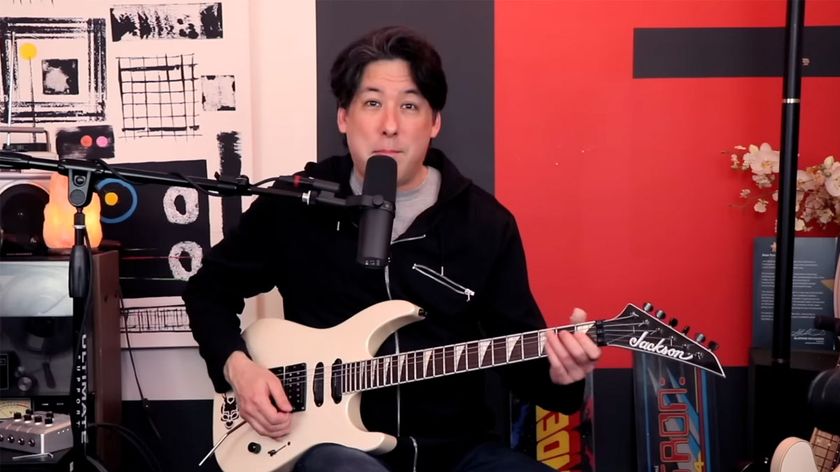
“It’s not even the same song!”: A YouTuber asked AI to tab a bunch of classic tracks by Metallica, Guns N' Roses and Nirvana and got some really crazy results

“The solo is very recognisable and crucial to the song”: How Chappell Roan’s former touring guitarist handled the Pink Pony Club guitar solo live on stage
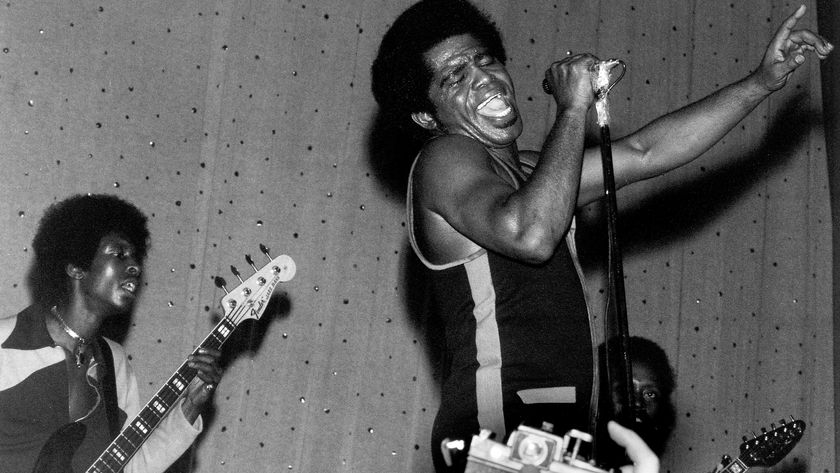
“James felt the fines would make you work harder. He was using that reverse psychology on us, and we didn’t understand at the time”: Bootsy Collins on why James Brown’s fines worked for his musicians
